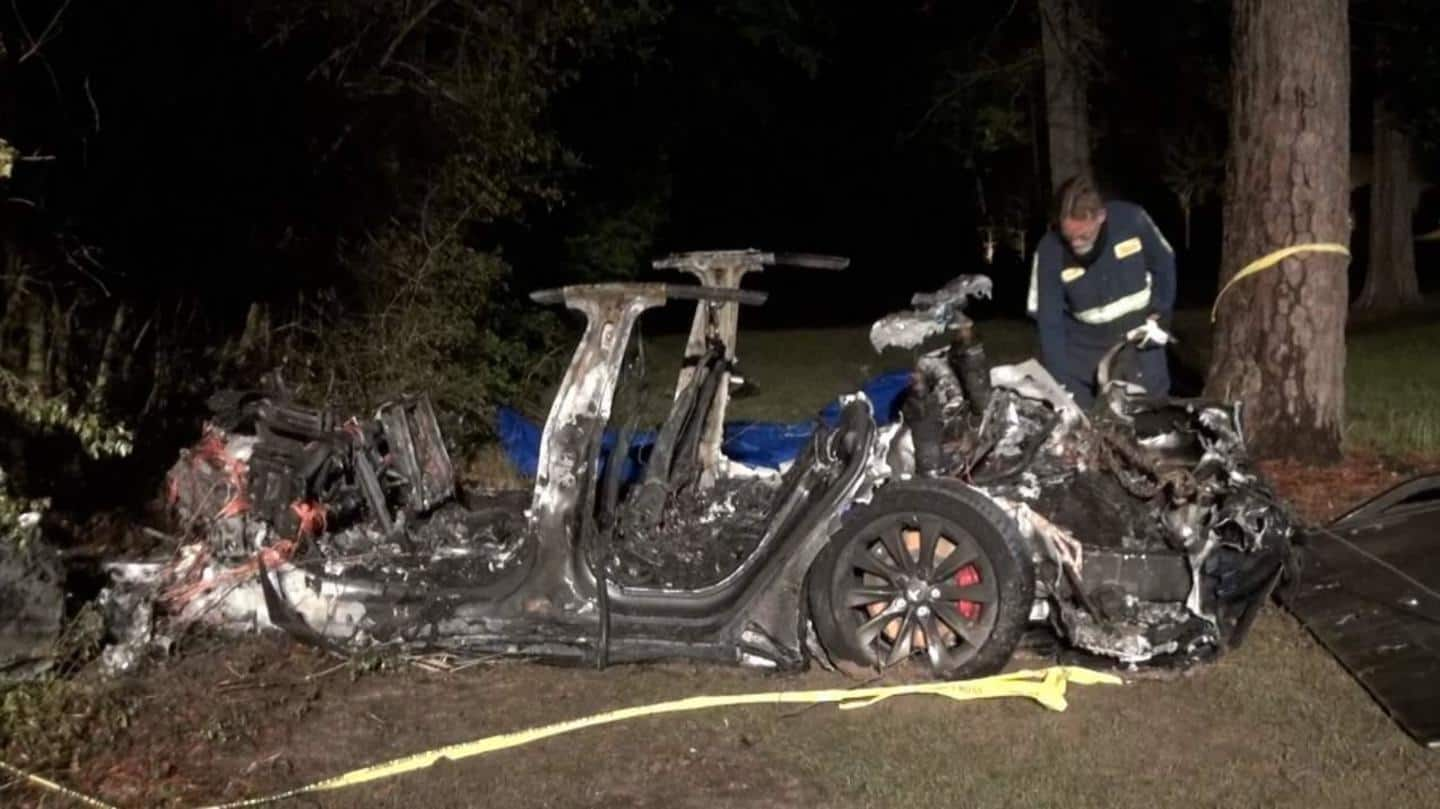
Tesla crash kills two, CEO Musk denies Autopilot use
What's the story
On April 18, two men aged 59 and 69 years old met a fiery demise when the 2019 Tesla Model S that they were traveling in collided with a tree and went up in flames just outside Houston. Since neither occupant was found in the driver's seat, the fatal mishap has fuelled fresh interest in the safety aspects of Tesla's autonomous driving technologies.
Details
Local police, investigators infer that car was piloting itself
Constable Mark Herman told the media that one occupant was in the back seat and another was in the front passenger seat. This led investigators to infer that the vehicle was piloting itself when it crashed. The National Highway Traffic Safety Administration (NHTSA) has reportedly launched a Special Crash Investigation team that is working with local authorities and Tesla to probe the matter.
Aftermath
It took firefighters four hours to tame the ensuing blaze
In fact, it took firefighters four hours to douse the ensuing blaze fuelled by the car's Lithium-ion batteries. Engadget rightly observed that first responders haven't yet fully adapted their methods for electric cars. Although that doesn't imply that electric cars are inherently unsafe, it does mean that efforts need to be made to help first responders combat such situations quickly.
Misunderstanding?
It is possible that passengers misunderstood Autopilot, Full Self-Driving
If the Model S was actually in Autopilot or using the Full Self-Driving (FSD) beta technology, this incident suggests that both the technologies were either misunderstood or overestimated by the occupants. Either way, the level two driver assistant FSD mode doesn't function completely autonomously. It mandates human presence in the driver's seat and also seeks periodic inputs from the driver.
CEO speaks
Cars data logs reveal that Autopilot wasn't engaged: Elon Musk
Meanwhile, Tesla boss Elon Musk, in a tweet, said that the fateful car's data logs revealed the customer had never purchased FSD and that Autopilot was not enabled. Musk did not reveal what other details were recovered from the vehicle. Similarly, investigators haven't yet explained why they concluded that nobody was in the Tesla's driver's seat.
Twitter debate
Tesla's driver detection while using Autopilot isn't completely foolproof
On the contrary, there are well-documented instances of people using Autopilot while the driver is either inactive or absent from the driver's seat. In his tweet, Musk added that the street where the crash occurred didn't have lane markings that are necessary for the Autopilot system to engage. However, a Twitter user posted a video showing Autopilot functioning on a street without lane markings.
NTSB steps in
Brother-in-law of a victim corroborates investigators' 'nobody was driving' theory
The National Transportation Safety Board (NTSB) which is known for its role in aircraft crash investigations is also sending two investigators to study the crash. Meanwhile, the brother-in-law of one of the deceased told local media that the car's owner had backed it down the driveway, then hopped into the back seat before the car drove off and crashed a few hundred yards away.
No comment
Despite Musk's tweet, Tesla hasn't shared data logs with authorities
Reuters reports that the police haven't yet heard from the carmaker despite Musk's tweet. In 2018, the NTSB removed Tesla as a party from a crash investigation after the carmaker publicly disclosed an ongoing probe's details without authorization. The present NTSB investigation will reportedly focus "on the vehicle's operation and the post-crash fire" Tesla did not respond to Reuters's request for comment.